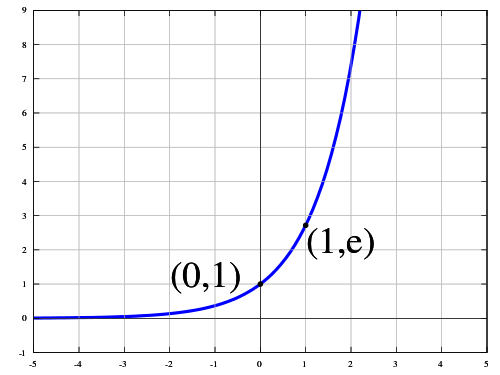🛠️ The Product Person #21: 2nd-Order Product Thinking
Learn how to apply 2nd-order thinking to your product decisions.

Every action has a consequence. And every consequence has its own consequence.
Second-order thinking is the process of acknowledging the later consequences of your decisions, after the easy-to-think-of early consequences.
It’s asking yourself, “If I do X, then Y will happen. But what happens as a result of Y?”
Of course, there can be further consequences after the 2nd order but it's just called 2nd order for short.
You Already Do It
You already perform second-order thinking.

Skipping desert at the restaurant might make you a bit sad (1st order) but you know you’ll increase your willpower, have a healthier body, etc. (2nd order)
Second-order thinking can go from negative to positive and vice versa.
Negative: Not eating cake will make you sad → Positive: It’ll keep you healthy.
Positive: Buying pricey, new shoes feels good → Negative: Your budget gets tightened.
Let’s Apply It To Building Products
First-order thinking is fast and easy
- Let’s build X because it accomplishes the goal.
Second-order thinking is more deliberate
- Yes, X gets the job done. But what are we overlooking by going with X instead of Y?
Example 1
You may want to hire freelancers to build your product. Because
First-order: You’ll save money. You’ll keep all the equity.
Although there are benefits in the short term, the long term effects may not be in your favor.
Second order: You have technical debt —suddenly you need to pivot but they were freelancers, not employees. So now you have to scrap all the work that was done and start from square one. Yikes.
Example 2
You just launched your SaaS business. With your first 50 customers, you have 1-on-1 meetings to make sure they’re onboarded correctly and that your product fits well into their workflow.
First-order: It takes a lot of time from other parts of your business.
Second-order: Those customers will like you and your product so much that they’ll do your marketing for you and provide great product feedback.
Looking at these examples, you might think “well yeah that’s obvious.” Yes, in hindsight it’s obvious. But the truth is that we tend to ignore second-order thinking because it’s fairly difficult.
Why It’s Hard
Let’s say we live in a simple world where every action has only 3 possible consequences.
Thinking of your consequences’ consequences means you have to consider 9 possible consequences. Thinking 1 order higher grows the probability space exponentially.
In the real world, every action has more than 3 consequences. So it’s no wonder people don’t bother thinking through all their decisions. There will be consequences we can’t think of no matter how hard we try.

Also, it’s difficult to defend conclusions rationalized by second-order thinking. The possibility space is so large that you’re likely to not take your findings seriously, let alone convince others of your conclusions.
If you told Blackberry that they’d go from owning 50% of the US smartphone market in 2007 to 0% today, you’d be considered crazy.
How To Get Better At It
Second-order thinking is a pretty simple concept, but it takes practice to do it intentionally.
It’s a powerful tool because since it’s hard to think in the second-order, most people won’t even try to do it. So if you’re able to master it and use it for important product choices, you’ll literally be thinking steps ahead of the competition.
When second order effects are planned and positive, we call that forward-thinking. When second order effects are unplanned and positive, we call it luck.
Tips
Here are some tips from Farnam Street to help you get better at thinking in the second order:
Always ask yourself “And then what?” or “What can happen as a result of this action?”
Think through time —What do the consequences look like in 10 minutes? 10 months? 10 Years?
For business decisions, ask yourself how important parts of the ecosystem are likely to respond. How will co-founders/employees deal with this? What will my competitors likely do? What about my suppliers? What about the regulators? How will the market/economy/government react?
It may help to also read up on behavioral psychology. You’ll learn of the main ways that humans react to certain circumstances. You can then take those learnings and apply them to your specific decisions.
📚Books I recommend:
Predictably Irrational by Dan Ariely
Nudge by Richard H. Thaler & Cass R. Sunstein
Thinking, Fast and Slow by Daniel Kahneman
(Currently listening to Thinking Fast and Slow on Audible —It’s good stuff. I have the other 2 downloaded as well)
Some Famous Examples
I thought it would be fun to list out a few famous examples of positive and negative second-order effects in products, primarily tech.
Here’s the format:
“Company did A”
1st order effect: “Because of B, C happened”
2nd order effect(s): “Because of C, D, E, and F happened.”
Positive → Negative effects

Slack replaces email
1st Order: No more email (Yay!)
2nd Order: Playing catch-up with messages sucks. Constant communication gets in the way of deep work.

Facebook invents the News Feed
1st Order: Keeping up with friends is much easier, social networks now have a solid monetization strategy.
2nd Order: Slot machine mechanics addict us to social media, people avoid social media entirely to combat addiction

Twitter popularizes hashtags
1st Order: It’s a convenient way to separate content by topics
2nd Order: People use it to game social media algorithms. People stop using it because it looks spammy/uncool.
Negative → Positive effects

Apple removes headphone jack in iPhone 7
1st Order: Frustrating UX
2nd Order: People buy Airpods because “what’s the alternative?”, Airpods become ~$200 billion business.
Apple removes keyboard from smartphone
1st Order: “How do you even type without a physical keyboard?”
2nd Order: Capture of the mass market, flourishing app ecosystem, Steve Jobs becomes legend.
Can you think of any other examples?

🤗 Thanks for reading today’s issue. I’m currently building a new video app product. So please bare with me and my inconsistent issue releases.
❤️ If you could heart this post or share with a friend, I’d really appreciate it
🐦 For product tweets: @ProductPersonHQ // My tweets: @antdke



